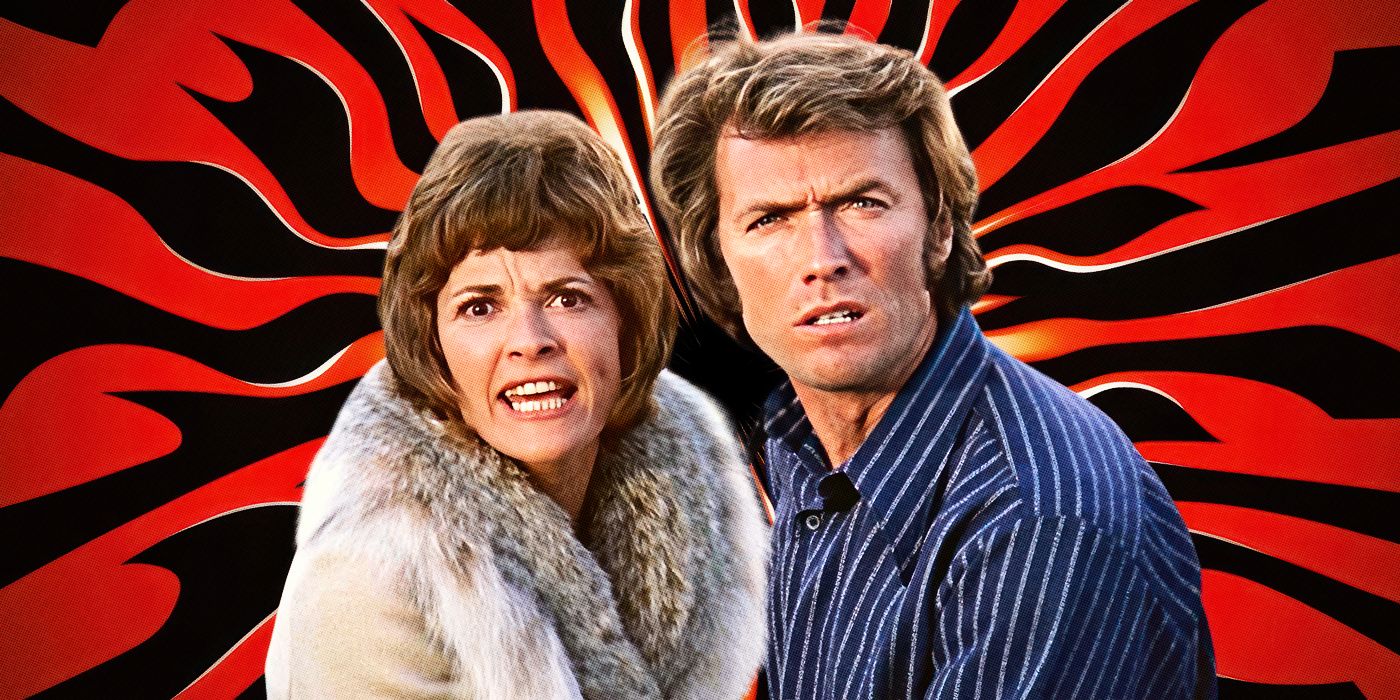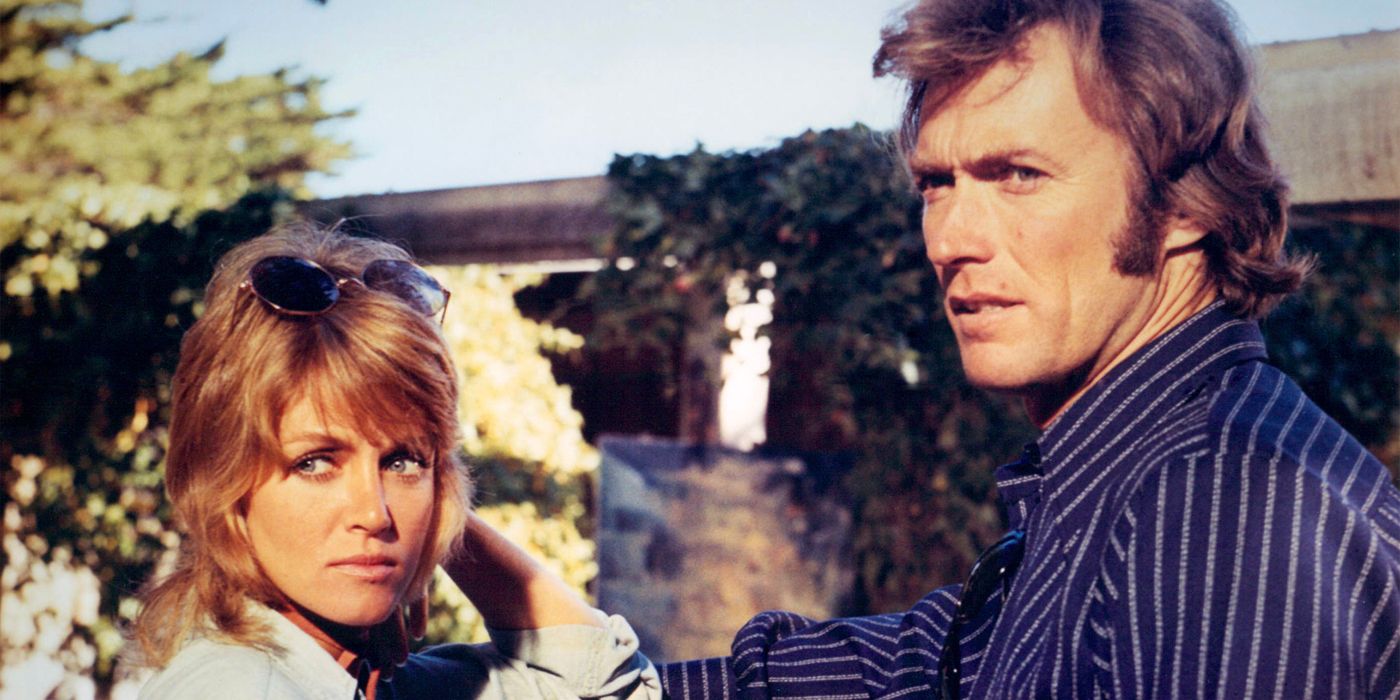When the free love movement blossomed in America in the 1960s, many folks started to look at relationship dynamics in more nuanced ways. It went hand in hand with the counterculture hijinks of the time, a ripple effect from a combustive cocktail of progressive, anti-war sentiments mixed with sex, drugs, and rock and roll. This was fodder ripe for the picking when it came to movies at the time, particularly hippie exploitation or hippie horror. These films often appeared to function as a way to spin hippie culture as a movement of Satan-worshippers bereft of morality. Undoubtedly, radical new attitudes on love and relationships shook the foundations of the traditional, nuclear family and the set role of a woman as a domestic, whose success depended on their unwavering loyalty to cater to one man. But this level of devotion does not always mean a happily ever after. It assuredly does not go down that way in Clint Eastwood’s 1971 directorial debut Play Misty for Me. Given the timing of the movie’s release and its notable celebration of hippie culture in the immediate aftermath of the free love era, Play Misty for Me functions as an antithetical to the exploitation films of the time that demonized the participants in the free love movement.
At the height of momentous social and political change in the late 1960s, the freewheeling antics of hippies ruled the scene, earning the movement a reputation rooted in hedonism, drug experimentation, and a rejection of pre-ordained roles as determined by a society fueled by capitalism and consumerism. This defiance of societal norms ignited a moral panic that film production companies were all too happy to indulge. Moviegoers of that time period were served up a slew of films which fixated on counterculture, such as 1967’s Hallucination Generation and 1968’s Wild in the Streets. These movies often did little more than construct cautionary tales about what happens when you lap up psychedelics and freebase free-thinking.
Even though these hippie exploitation films often romanticized its free-spirited subjects, they also had a part in instilling negative attitudes towards a bohemian lifestyle. These stereotypes were only reinforced by the media when the Manson family murders shook the nation in 1969. The tragedy occurred just the summer before Play Misty began shooting and contributed to the bitter end of the counterculture movement.
Clint Eastwood's Directorial Debut Came at the Twilight of Hippie Exploitation
After nearly two decades as an actor, Clint Eastwood was flying high on the fruits of his success, which helped him co-found his very own production company called Malpaso Productions in 1967. Eastwood was finally awarded an opportunity to flex his artistic chops behind the camera with the suspenseful drama Play Misty for Me, written by two frequent collaborators of Eastwood’s, Jo Heims and Dean Reisner. The story centers around Dave Garver (played by Clint Eastwood himself) a hip and poetry-keen jazz DJ on the Monterey Peninsula who finds himself in the amorous crosshairs of an unstable woman named Evelyn Draper (Jessica Walters of Arrested Development and Archer fame).
Evelyn sets a thirst trap by repeatedly calling in anonymously to Dave’s show and requesting he plays the song “Misty” by Erroll Garner. Eventually, Evelyn engages with Dave in person after following him to his local watering hole, and identifies herself as the sultry mystery caller, ultimately leading them to spend the night together. What at first appears to be a casual sexual encounter quickly dissolves into something far more sinister when Evelyn becomes frightfully obsessed with Dave and clingier than shrink wrap.
While Dave is no stranger to persistent offerings of female companionship, he finds himself increasingly hung up on his groovy ex Tobie (Donna Mills), an artist enjoying her own era of independence in alignment with the hippie ethos. Even though Dave does not say no to a fling, it is clear that he does not obligate Tobie to reject similar behaviors in his favor. In this way, Dave and Tobie’s simmering romance models the shifting nature of relationships that was becoming more commonplace in the wake of the free love movement. Instead of condemning this relationship, the narrative gives their open-ended dynamic credibility, and fingers the possessive Evelyn as the true offender. Tobie herself admits that she spent time away from Dave because she was becoming “one of her most unfavorite people: a jealous woman”. Enter, a jealous woman: Evelyn.
In 'Play Misty for Me,' Hell Hath No Fury Like an Evelyn Scorned
Evelyn’s brand of romantic obsession is nightmare fuel for those who adopted a lifestyle influenced by free love in the wake of the 60s. Jessica Walters as Evelyn is unnerving perfection; flipping from a wide-eyed damsel to a rabid psychotic like the switch of an electric chair. Dave time and time again attempts to shake off Evelyn, which only makes her more steadfast in her pursuit to lock him down. She preys on Dave’s restless spirit and growing inclination to settle down. Evelyn is an imposing introduction to this domestic life: smothering Dave with love and attention, while making sure he is well-bedded and well-fed, even stocking Dave’s fridge and fixing him lunch after just one night together. Evelyn eagerly accepts a role akin to a caretaker or housewife, and embarks on a murderous odyssey to eliminate the women in Dave’s life who could fulfill that role, i.e. Tobie and even Dave’s housekeeper Birdie (Clarice Taylor).
Creating anxiety around the concept of traditional gender roles is just one way Play Misty for Me underscores the liberating aspects of counterculture. There are visual markers throughout the film that celebrate the lingering hallmarks of the hippie generation: from a crunchy love scene between Dave and Tobie under waterfalls and among the clover in the arms of Mother Nature, right down to a gratuitous documentary-style feature of the Monterey Jazz Festival, calling to mind 1970’s Gimme Shelter, but with more bass lines and fewer fatalities.
Eastwood’s cult classic continues to be impactful to this day as a bookend to an era of exploitative movies that characterized participants in counterculture as acid-soaked and morally bankrupt hedonists. Supported by a narrative that held up a mirror to a sea change in gender roles, the film effectively captures the lingering aftereffects of a cultural and social revolution and helped fire up Eastwood’s next era as a big-time, Oscar-winning director.


